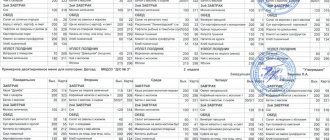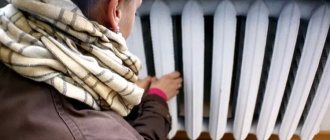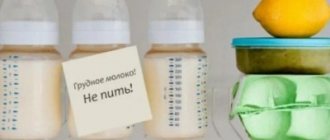A preschool institution requires special attention to maintaining cleanliness, since the health of the children attending the kindergarten directly depends on this. Cleaning in preschool educational institutions regulated by SanPiN 2.4.1.3049-13 - this document determines the procedure for work, requirements for detergents and cleaning products used, and cleaning features in the interior and surrounding areas of the kindergarten.
Cleaning in a kindergarten is divided into two types: daily and general. The main task of daily cleaning is to maintain favorable sanitary conditions and cleanliness. Daily cleaning in a preschool educational institution includes: washing and disinfecting toys, wiping furniture, washing plumbing fixtures, cleaning carpets and mopping floors, ventilating rooms and quartzing. Regular cleaning allows you to eliminate the rapid development of pathogenic microflora in the premises and, thereby, reduce the load on children's immunity. It is very important to carry out wet cleaning in a timely manner to prevent dust accumulation in the premises. Removing dust helps reduce the risk of allergic reactions in students. Finally, careful cleaning of surfaces, in particular in bathrooms and food service areas, ensures the prevention of intestinal infections.
General cleaning of premises in preschool educational institutions is carried out according to a schedule based on SanPiN. An example of such a graph is shown in the figure below.
General cleaning in the preschool educational institution is performed monthly. Unlike everyday cleaning, general cleaning is carried out with special care and covers absolutely all rooms and surfaces. During the cleaning process, all hard-to-reach places that are not treated during daily cleaning are cleaned: baseboards, floor areas under furniture, lighting fixtures, ventilation hoods, etc. Carpets and blinds are wet cleaned and heating radiators are washed. Mattresses, blankets and pillows are ventilated. All teaching materials are thoroughly cleaned of dust. Window cleaning is also carried out. Carpets can be dry cleaned if necessary.
General cleaning and disinfection is carried out in the preschool educational institution on dates appointed by the head of the institution.
In addition, the kindergarten periodically cleans the surrounding area from snow and ice, fallen leaves, debris, etc. An example of such a schedule indicating the frequency is shown in the figure below.
Cleaning of preschool premises in the warm and cold seasons is carried out according to a similar schedule. The only exception is the frequency and duration of ventilation, which varies depending on the season.
Requirements GOST 30494-2011:
According to clause 4.4 and table 2 of GOST 30494-2011, the optimal and permissible standard air temperature in the service area of preschool institutions should be within the limits:
During the cold season:
- Group changing room and toilet for nursery and junior groups: optimal 21-23°C, acceptable 20-24°C;
- Group changing room and toilet for secondary and preschool groups: optimal 19-21°C, acceptable 18-25°C;
- Bedroom for nursery and junior groups: optimal 20-22°C, acceptable 19-23°C;
- Bedroom for middle and preschool groups: optimal 19-21°C, acceptable 18-23°C;
- Lobby, staircase: optimal 18-20°C, acceptable 16-22°C;
- Kitchen: optimal 19-21°C, acceptable 18-26°C;
- Bathroom: optimal 24-26°C, acceptable 18-26°C
- Pantry: optimal 16-18°C, acceptable 12-22°C
During the warm season:
- Group bedrooms: optimal 23-25°C, acceptable 18-28°C.
For preschool institutions located in areas with the coldest five-day temperature (provision 0.92) minus 31 ° C and below, the permissible design air temperature in the room should be taken 1 ° C higher (except for the kitchen, bathroom and pantry).
According to clause 4.6, when ensuring microclimate indicators at various points in the service area, an air temperature difference of no more than 2°C is allowed for optimal indicators and 3°C for acceptable ones.
In accordance with clause 4.7, in public buildings in accordance with regulatory and technical documents (SP 60.13330.2016 Heating, ventilation and air conditioning. Updated edition of SNiP 41-01-2003) during the cold period of the year during non-working hours, it is allowed to reduce microclimate indicators by taking the air temperature below the normalized value, but not below:
- 12°C - in public, administrative and domestic premises.
The normalized temperature must be ensured before use.
Marking of rags for cleaning in kindergarten according to Sanpin
> > If the toilet remains dirty after flushing, the assistant teacher carries out additional treatment with a brush and disinfectant.
means. The number of brushes corresponds to the number of toilets. Bathtubs, sinks, and toilets are cleaned twice a day with ruffs or brushes using detergents and disinfectants. The pots are washed after each use using ruffs or brushes and detergents.
After which the pots are rinsed with running water and stored in special cabinets with individual cells. Processing is carried out in this way, since there are acceptable hygienic standards for the level of cleanliness (not sterility), and all this is also carried out with the aim of preventing detergents from coming into contact with the child’s skin and preventing allergic reactions.
The answers are given on the basis of modern Sanitary Regulations and personal experience of the teacher and mother.
1. In younger groups (where pots are used) there are special tanks with a lid.
Requirements SP 2.4.3648-20 (valid from 01/01/2021):
clause 2.7. Microclimate, heating and ventilation in facilities must meet the following requirements:
clause 2.7.1. Buildings are equipped with heating and ventilation systems in accordance with the requirements for heating, ventilation and air conditioning in public buildings and structures in accordance with the legislation on technical regulation in the field of safety of buildings and structures.
The premises are provided with microclimate and air exchange parameters determined by the requirements of hygienic standards.
The maximum permissible concentrations of pollutants determined by the requirements of hygienic standards are not allowed to be exceeded in the air.
The use of portable heating devices with infrared radiation is not permitted.
clause 2.7.2. The design of windows should ensure the possibility of ventilation of premises at any time of the year (with the exception of children's playrooms located in shopping, entertainment and cultural leisure centers, pavilions, airports, railway stations and other non-residential facilities).
Ventilation is not carried out in the presence of children.
clause 2.7.3. Air temperature control in all rooms intended for children and youth is carried out by the Organization using thermometers.
clause 2.7.4. Premises where equipment is installed that is a source of dust, chemicals, excess heat and moisture are additionally provided with a local exhaust ventilation system.
Each group of premises (industrial, warehouse, sanitary) is equipped with separate supply and exhaust ventilation systems with mechanical and (or) natural impulse.
An inspection of the technical condition of the ventilation system (inspection, cleaning and efficiency monitoring) is carried out before putting the building into operation, then 2 years after commissioning, and subsequently at least once every 10 years. When examining the technical condition of ventilation, instrumental measurements of air exhaust volumes should be carried out.
clause 2.7.5. Enclosing devices of heating devices must be made of materials that are harmless to the health of children.
Fences made of particle boards are not allowed.
clause 3.11. In country stationary children's health camps with round-the-clock stay, the following requirements must be met:
clause 3.11.11. The permissible air temperature is not lower than:
- in sleeping areas +18°С,
- in gyms +17°С,
- showers +25°С,
- in the dining room, in premises for cultural purposes and for classes + 18°C.
Premises for permanent residence and residence of children for air disinfection are equipped with air disinfection devices.
How to automate cleaning control?
To do this, it is convenient to use the software module “Health Protection of Employees and Children” of the System for Monitoring the Activities of an Educational Institution (SKDOU). It contains more than 20 logs and allows you to monitor COVID-19 in order to reduce the incidence of illness in children and employees.
For example, look at the video on how to work in the system with a general cleaning log:
You can try the program for free here.
Author of the article: Lidiya Sitnikova
Requirements of SanPiN 2.4.1.3049-13 (valid until 01/01/2021):
According to Appendix 3 to SanPiN 2.4.1.3049-13, the air temperature in the premises should not be lower than:
- Reception rooms, playrooms for group nurseries: 22-24°C
- Reception, playrooms of junior, middle, senior group cells: 21-23°C
- Bedrooms of all group cells: 19-20°C
- Nursery toilets: 22-24°C
- Toilet rooms for preschool groups: 19-20°C
- Medical premises: 22-24°C
- Halls for music. and gymnastics: 19-20°C
- Walking verandas: not less than 12°C
- Pool room with bathtub: not less than 29°C
- Changing room with pool shower: 25-26°C
- Heated passages: not less than 15°C
In rooms with baths for therapeutic massage, the normalized air temperature is at least 30 °C (clause 10.18 of SanPiN 2.4.1.3049-13).
Air temperature in kindergartens (preschool educational institutions) according to GOST and SanPiN standards
What kind of rags should be in kindergarten?
There are certain standards of what should be in kindergarten. There is a classification into: tangle, terry, waffle and other types.
All of them are intended for different purposes and must undergo special sanitation before use. Mainly for preschool educational institutions, linen cleaning material is used, which has many advantages and is more in demand among its analogues. To meet the needs of kindergartens, textile waste is used, which is distinguished by its compliance with quality standards and all the requirements, and also has decent external characteristics.
Linen rags are made from household textile waste, which makes it softer and more hygroscopic.
It is impossible to sew a good thing from such fabrics, but it is optimal for washing windows, floors, and wiping off dust.
Pre-clean flaps are processed and only then provided
Terms and explanations for the article:
Explanations
The temperature of the coldest five-day period with a probability of 0.92 can be found in column 5 of Table 3.1 of the current SP 131.13330.2018 “SNiP 23-01-99* Construction Climatology”.
For example, the temperature of the coldest five-day period with a probability of 0.92 is:
- Moscow - minus 25°C
- St. Petersburg - minus 24°C
- Ekaterinburg - minus 32°С
- Krasnodar - minus 14°C
- Ufa - minus 33°С
- Novosibirsk - minus 37°C
- Nizhny Novgorod - minus 30°С
- Kazan - minus 31°C
- Chelyabinsk minus 32°C
- Rostov-on-Don - minus 19°C
- Perm - minus 35°С
Marking of cleaning equipment at catering establishments
It is not regulated by a clear purpose of colors. Therefore, each enterprise can independently designate its own colors for each zone. For example, red is for cleaning a meat shop, blue is for a fish shop, green is for a vegetable shop, yellow is for a flour shop. Employees often wonder what color equipment is used to clean the distribution area ? – you can use green color, it can also be used for cleaning equipment of bar counters and tables where food is consumed.
Another frequently asked question: is specially marked cleaning equipment required for refrigerated rooms ? – the answer is definitely “Yes!”, for cleaning each group of premises (hot and cold shops, meat and fish shops, flour and confectionery shops, semi-finished products preparation shops, procurement shops, non-refrigerated warehouses, refrigerated chambers, auxiliary premises, sanitary facilities ) allocate separate marked cleaning equipment, in accordance with the requirements of SanPiN 2.3.2.1324-03 “Hygienic requirements for shelf life and storage conditions of food products.”
Marking of cleaning equipment (sample)
InventoryPurposeMarkingMarking methodBucket For cleaning toilets UB Oil paint on the outer surface of the bucket Brush, mop For washing floors For floors Marking is applied with oil paint on the handle of the brush or handle of the mop, if the handle or handle is made of wood, then the burning method is used Burlap For cleaning bathrooms A red flap A red flap is sewn onto the corner of the burlap Napkins For washing walls corridors Green napkin Cleaning napkins are used in different colors for each zone Mops For cleaning floors in a hotel room Mops are blue or the colored labels are cut off and only a blue label remains Mops for cleaning can be either in different colors (corresponding to each cleaning zone) or with sewn colored labels of four different colors, three of which are cut off leaving one label of a specific colorList of cleaning equipment subject to mandatory marking:
- Buckets
- Buckets on wheels
- Floor rags (rags)
- Mops
- Mops
- Handles
- Brushes
- Broom
- Scoop
- Squeegees for windows and floors
- Scrapers
- Cleaning trolley
- Bucketless cleaning trolley
- Microfiber cloths
- Trash cans
- Cleaners
- Garbage containers
To summarize, color coding helps:
– avoid cross-contamination and contamination with microbes and bacteria. The reputation of each establishment in the HoReCa sector is very expensive, therefore, in the fight for your client, you must take all possible precautions. And the healthcare, public nutrition and education systems need this vitally.
– marking of cleaning equipment allows you to determine which contamination zone the equipment belongs to, which makes it much easier for management to monitor compliance with cleanliness standards.
Instructions
To prepare children's dishes from eggs, you need to use a special protective room and a certain procedure for performing actions.
When carrying out work, we must not forget about the safety rules according to the instructions for processing eggs according to SanPiN in kindergarten 2020:
- The disinfectant should not come into contact with mucous membranes or skin. For the same reason, the shells are thoroughly washed before serving.
- Workers must perform work duties exclusively in protective clothing and protective gloves.
- Only adults who are not allergic to disinfection drugs can comply with the requirements of SanPiN.
Processing eggs is not that easy. If an employee makes a mistake, children may be in serious danger. Therefore, in modern gardens, special equipment is used, and each employee is given individual instructions.
The use of new technologies makes it possible to minimize human participation in the process. So, they try to exclude the possibility of errors.
Regulations for egg disinfection
Means used
Disinfectors may vary depending on the region where the institution is located.
The table provides a list of recommended products:
| Drug name | Properties | Note |
| Nika-Extra M-Profi | It is recommended for kindergartens because it has a low level of toxicity and is therefore safe if ingested. Does not create fumes indoors. | Cleansing properties are preserved even in severe frost. Does not cause rust on metal containers and sinks. |
| Chloramine | Eggs are allowed to be stored in a 0.5% solution for no more than 5 minutes. For mixing, use 10,000 liters of water with the addition of 50 g. substances. | The product is recommended for use in preschool educational institutions. |
| Ekom-50M | The product is stored in a disinfectant for no more than 20 minutes at a temperature of 30 degrees. | — |
| Optimax | Depending on the concentration, different amounts should be used: • 0.5% - 50 ml per 9950 liters of water; • 1% - 100 ml per 9900 l. | Another effective preparation for cleaning eggs in kindergarten. |
| Ekom-25M | For processing, a one percent solution is used, in which the treat can be stored for 5 minutes. | — |
| Nika-2 | — | They are used not only in kindergartens, but also in the baking industry. |
In rooms where disinfection is carried out, there must be a list of products on the wall describing each stage of work. This will help employees learn the process faster.











